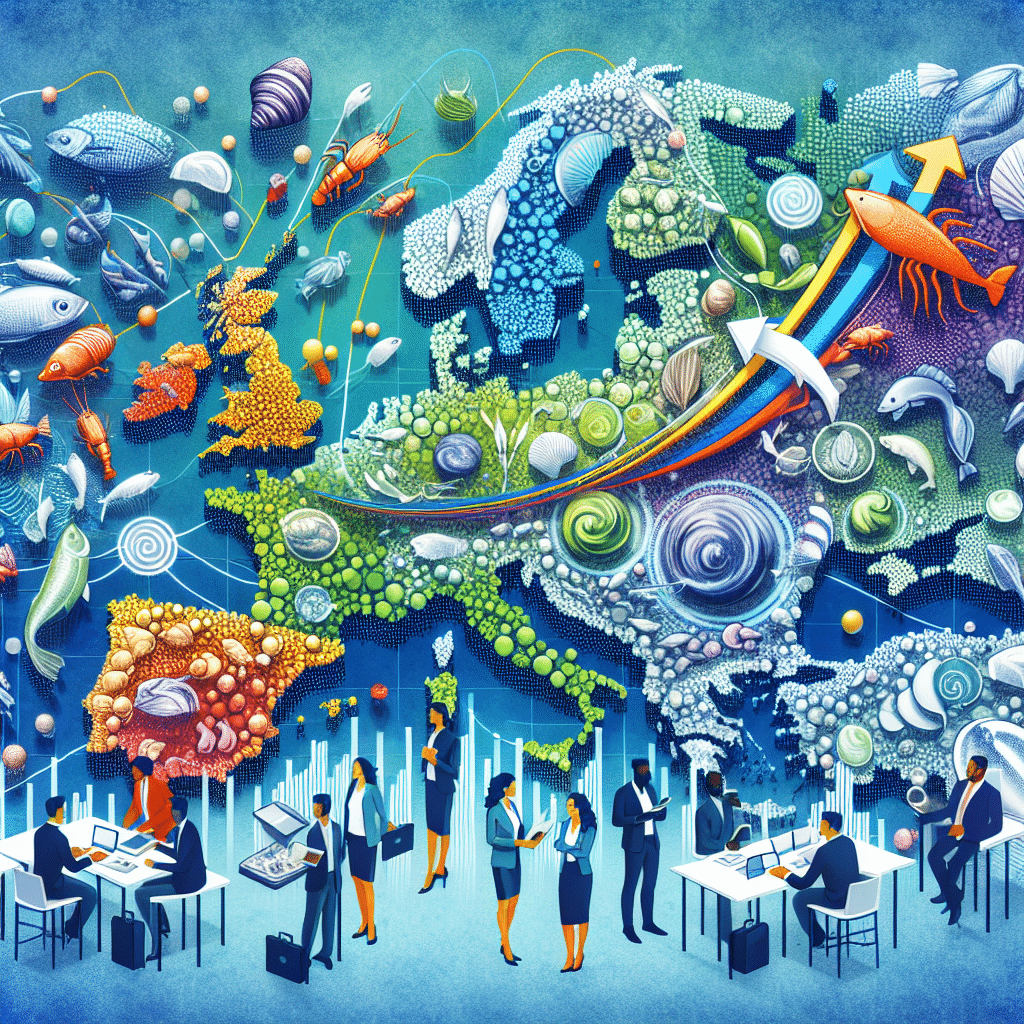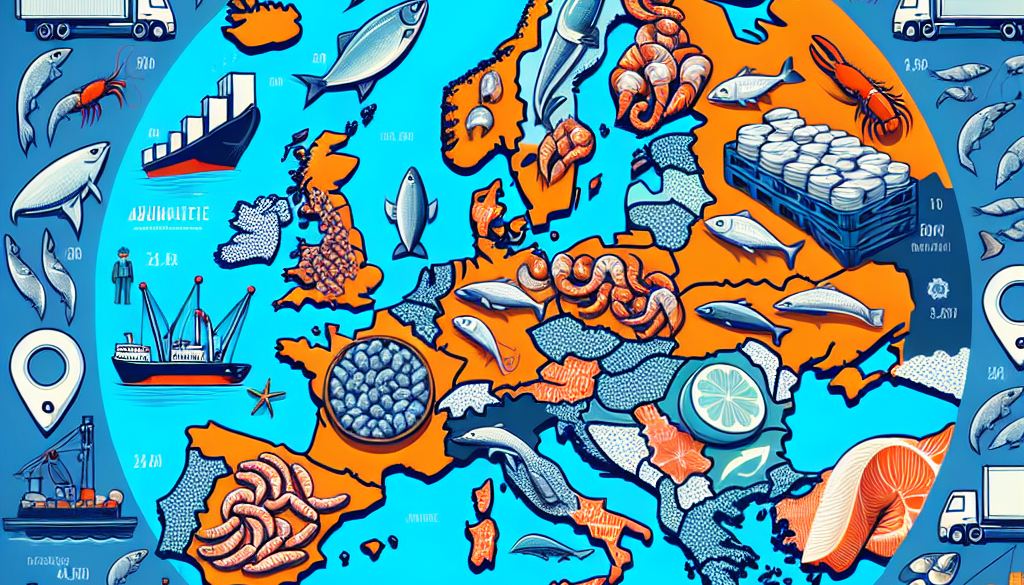The Potential of the European Market for Seafood Suppliers
-
Table of Contents
- European Market’s Potential for Seafood Suppliers: A Deep Dive
- Understanding the European Seafood Consumer
- Market Size and Growth Projections
- Opportunities for Seafood Suppliers
- Challenges Facing Seafood Suppliers
- Statistical Insights and Trends
- Conclusion: Seizing the European Seafood Market Opportunity
- ETprotein: Catering to the European Market’s Protein Needs
European Market’s Potential for Seafood Suppliers: A Deep Dive

The European market presents a vast and diverse landscape for seafood suppliers. With a rich culinary tradition that spans various cultures and preferences, Europe’s demand for seafood is both substantial and sophisticated. This article explores the potential of the European market for seafood suppliers, highlighting key trends, consumer behaviors, and opportunities for growth.
Understanding the European Seafood Consumer
Europeans have a long-standing relationship with seafood, which is deeply embedded in many national cuisines. The consumption patterns, however, vary significantly across the continent. Southern European countries, such as Spain, Italy, and Greece, traditionally consume more seafood due to their Mediterranean diets, while Northern European countries have shown a growing interest in sustainable and exotic seafood options.
- Health-conscious consumers are increasingly seeking out seafood as a source of protein and omega-3 fatty acids.
- There is a growing trend towards ethical and sustainable seafood sourcing, with consumers willing to pay a premium for such products.
- Convenience is key for many European consumers, leading to a rise in demand for pre-packaged and ready-to-eat seafood products.
Market Size and Growth Projections
The European seafood market is one of the largest in the world. According to a report by the European Market Observatory for Fisheries and Aquaculture Products (EUMOFA), the total seafood consumption in the EU stood at approximately 12.5 million tonnes in 2020. The market is expected to grow steadily, driven by factors such as population growth, rising disposable incomes, and increased awareness of the health benefits associated with seafood consumption.
- Spain, France, Italy, and Germany are among the largest consumers of seafood in Europe.
- The European Commission has implemented policies to promote sustainable fishing practices, which could influence market dynamics.
- Imports play a crucial role in the European seafood market, with countries like Norway and Iceland being key suppliers.
Opportunities for Seafood Suppliers
Seafood suppliers looking to enter or expand within the European market can capitalize on several opportunities:
- Innovation in Product Offerings: There is a demand for new and innovative seafood products, such as plant-based seafood alternatives and value-added products like marinated or seasoned fish.
- Sustainability Credentials: Suppliers that can demonstrate strong sustainability credentials, such as eco-label certifications, can differentiate themselves in the market.
- Supply Chain Transparency: European consumers are increasingly interested in the traceability of their food. Suppliers that provide transparent information about the sourcing and production of their seafood can gain consumer trust.
- Partnerships and Collaborations: Establishing partnerships with local distributors and retailers can help suppliers navigate the complex European market landscape.
Challenges Facing Seafood Suppliers
While the European market offers significant potential, seafood suppliers must also navigate several challenges:
- Regulatory Environment: The EU has strict regulations regarding food safety, labeling, and sustainability, which suppliers must comply with to access the market.
- Competition: The market is highly competitive, with suppliers from around the world vying for a share of the European consumer’s plate.
- Economic Fluctuations: Economic uncertainties, such as those caused by Brexit or the COVID-19 pandemic, can impact consumer spending and disrupt supply chains.
Statistical Insights and Trends
Recent statistics shed light on the current state and trends within the European seafood market:
- The EU is the world’s largest importer of seafood, with imports valued at €26 billion in 2020.
- Aquaculture accounts for about 20% of the total EU fish production, highlighting the potential for growth in this sector.
- Organic seafood sales are on the rise, with a growth rate of approximately 7% per year.
Conclusion: Seizing the European Seafood Market Opportunity
The European market for seafood suppliers is ripe with opportunities but also presents unique challenges. Suppliers that can offer innovative, sustainable, and high-quality products while navigating the regulatory landscape stand to gain a significant foothold in this lucrative market. With the right strategies, seafood suppliers can tap into the growing demand and diverse preferences of European consumers, ensuring long-term success in this dynamic industry.
ETprotein: Catering to the European Market’s Protein Needs
For seafood suppliers looking to enhance their product offerings with high-quality protein alternatives, ETprotein’s range of organic bulk vegan proteins and L-(+)-Ergothioneine (EGT) can serve as an excellent complement. Their products, known for their neutral taste and non-GMO, allergen-free attributes, are ideal for the health-conscious European consumer. ETprotein’s commitment to sustainability and quality aligns with the European market’s demand for ethical and transparent food sourcing, making them a valuable partner for seafood suppliers aiming to expand their reach in Europe.
About ETprotein:
ETprotein, a reputable protein and L-(+)-Ergothioneine (EGT) Chinese factory manufacturer and supplier, is renowned for producing, stocking, exporting, and delivering the highest quality organic bulk vegan proteins and L-(+)-Ergothioneine. They include Organic rice protein, clear rice protein, pea protein, clear pea protein, watermelon seed protein, pumpkin seed protein, sunflower seed protein, mung bean protein, peanut protein, and L-(+)-Ergothioneine EGT Pharmaceutical grade, L-(+)-Ergothioneine EGT food grade, L-(+)-Ergothioneine EGT cosmetic grade, L-(+)-Ergothioneine EGT reference grade and L-(+)-Ergothioneine EGT standard. Their offerings, characterized by a neutral taste, non-GMO, allergen-free attributes, with L-(+)-Ergothioneine purity over 98%, 99%, cater to a diverse range of industries. They serve nutraceutical, pharmaceutical, cosmeceutical, veterinary, as well as food and beverage finished product distributors, traders, and manufacturers across Europe, USA, Canada, Australia, Thailand, Japan, Korea, Brazil, and Chile, among others.
ETprotein specialization includes exporting and delivering tailor-made protein powder and finished nutritional supplements. Their extensive product range covers sectors like Food and Beverage, Sports Nutrition, Weight Management, Dietary Supplements, Health and Wellness Products, and Infant Formula, ensuring comprehensive solutions to meet all your protein needs.
As a trusted company by leading global food and beverage brands and Fortune 500 companies, ETprotein reinforces China’s reputation in the global arena. For more information or to sample their products, please contact them and email sales(at)ETprotein.com today.














